We are inaugurating a new column today, #torneremoaviaggiare: a hashtag to give you travel ideas to mark for when we can finally get back on the road. In each issue, ten different villages for each region of Italy, including hidden gems, art, history. We start today with Lombardy.
1. Casalmaggiore
A village located on the border between the provinces of Cremona (of which it is part), Mantua and Parma, it is a fundamental connection point since it lies on the Po River and before the town there is the bridge that connects Lombardy to Emilia Romagna. A village of ancient origins, precisely because of its strategic location it was long contended for by the various regional powers-Venice, Milan, and Mantua. The central Piazza Garibaldi, the town’s main gathering place, is one of the most beautiful in Lombardy, and is recognizable by the imposing Palazzo Comunale, dating from the late 19th century and built in the neo-Gothic forms in vogue at the time. Also worth visiting are the splendid neoclassical cathedral, also from the 19th century, the Museo del Bijou (a unicum in all of Italy, with pieces ranging from the late 19th century to the 1970s) and Palazzo Diotti, home to the museum of the same name, which houses masterpieces by Giuseppe Diotti, one of the greatest painters of neoclassicism, who was originally from Casalmaggiore.
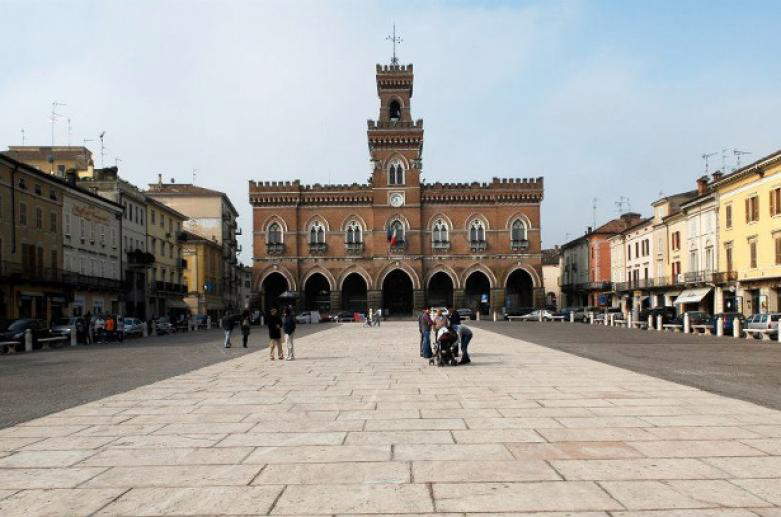 |
| Casalmaggiore, Piazza Garibaldi. Ph. Credit In Lombardy |
2. San Benedetto Po
An ancient village also located on the banks of the Po, clustered around the monastery of Polirone, one of the oldest in Europe: it was founded in 1007 by Tedaldo di Canossa and continued to expand over the centuries, experiencing its most fruitful season in the 16th century, when great artists such as Correggio (one of his frescoes is preserved in the refectory of the ancient monastery, now the site of exhibitions and events), Antonio Begarelli (his is the cycle of statues of saints that adorns the basilica) and Giulio Romano (the sacristy is entirely frescoed by his school) worked here. The monastery premises also house the Polironiano Civic Museum, which tells the history and customs of the area, which has a strong agricultural vocation (there are rooms devoted to work in the fields, pig breeding, life along the Po, and the great protagonists of village life over the centuries, above all Matilda of Canossa and the poet Umberto Bellintani). Nearby, the Golene Park allows for many nature hikes.
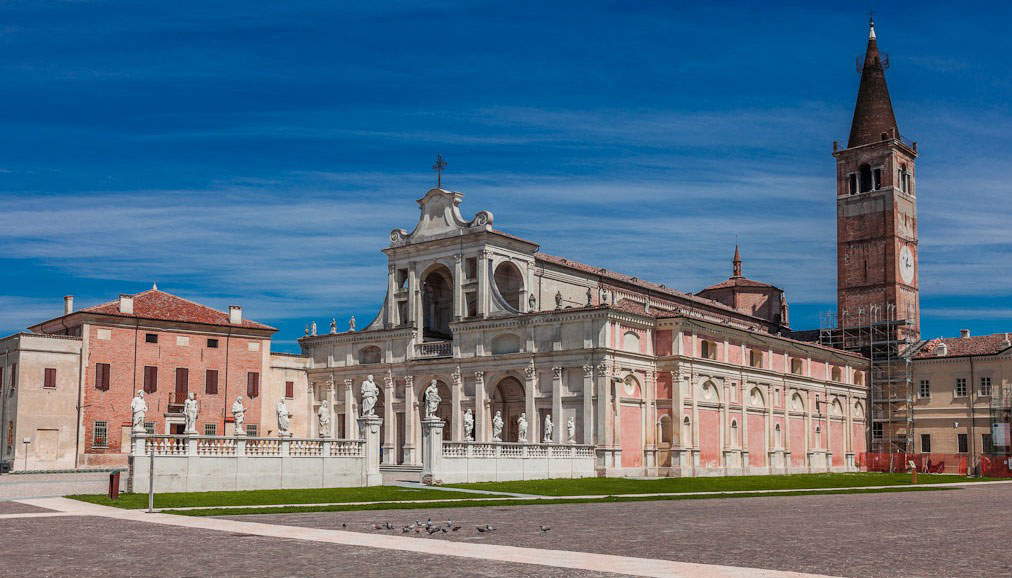 |
| San Benedetto Po, Basilica of San Benedetto. Ph. Credit Amici della Basilica Onlus |
3. Bellagio
In the province of Como, it is famous first and foremost for its particularly “scenic” location at the junction of the two southern branches of Lake Como. The settlement is very old (already the Celts lived near today’s center and the Romans installed a garrison there), and during the Middle Ages a fortress was built there from which it was possible to observe much of the lake. The heyday, however, was the nineteenth century, when Bellagio began to become a resort and was surrounded by picturesque villas. Of these, the most famous is probably Villa Melzi d’Eril, where the neoclassical-style aristocratic chapel is located (it was designed by Giocondo Albertolli, the stuccoes and frescoes were designed by Giuseppe Bossi, an important neoclassical artist who was also secretary of the Brera Academy, and inside is also the tomb of Ludovico Melzi d’Eril, the last work of the great Vincenzo Vela. The lush gardens can also be visited. Also worth seeing in Bellagio is the famous lakefront.
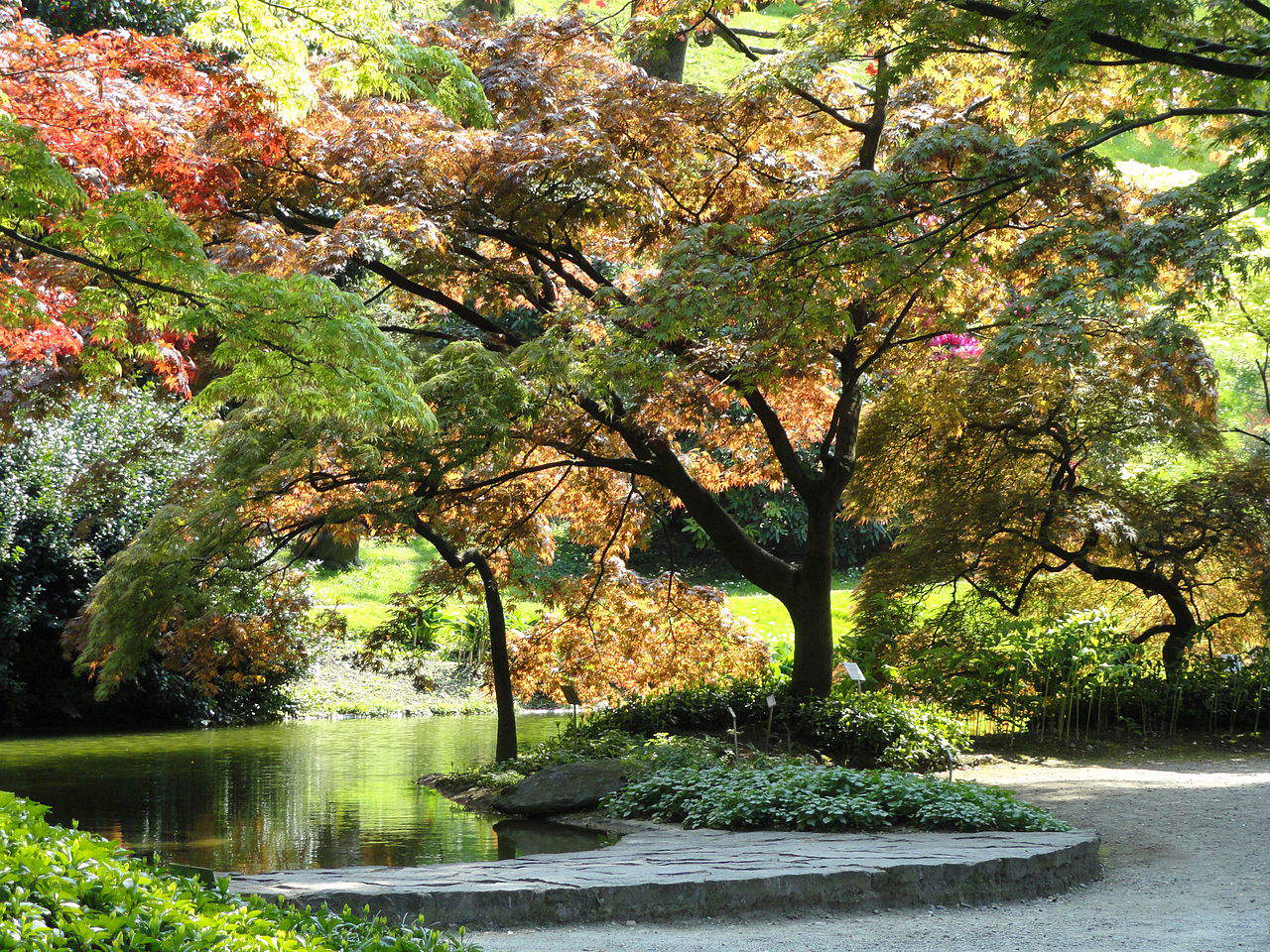 |
| Bellagio, the gardens of Villa Melzi d’Eril. |
4. Bormio
This is one of the main destinations in Valtellina: in the province of Sondrio, it is located just a few kilometers from the Swiss border and is a renowned ski resort, the scene of major events (such as the men’s downhill race of the Alpine Ski World Cup, which typically takes place in December, between Christmas and New Year’s Day). However, Bormio is also a village rich in history, as evidenced by the many remaining medieval monuments: including the 13th-century Torre degli Alberti, the 14th-century loggia known as the “Kuerc” (“lid” in the local dialect: it was the place for public assemblies and the administration of justice when Bormio was the seat of the county of the same name), the collegiate church of Saints Gervasio and Protasio, dating as far back as the ninth century (although it was later extensively remodeled in recent times, and the facade is seventeenth-century: the interior contains altarpieces and stuccoes from the same period), the Romanesque oratory of San Vitale (also remodeled in later centuries, but still preserves the ancient structure).
 |
| View of Bormio. Ph. Credit Jules Nidi |
5. Melegnano
Melegnano has been of great strategic importance over the centuries as a town located at the gates of Milan, and it was here that in 1515 the famous Battle of Marignano was fought between the Franco-Venetian alliance on one side and the Duchy of Milan with its allies (Switzerland and Mantua) on the other: the clash, which took place as part of the Wars of Italy, was decisive in that it forced Duke Maximilian Sforza to cede the duchy to Francis I of France. There are many ancient vestiges of a village with a centuries-old history, but the most famous and most visited monument is the great Castle, of 14th-century origin, inside decorated with splendid frescoes dating from the 16th century. The basilica of the Nativity of St. John the Baptist, also like the castle in the town center, houses a 16th-century altarpiece by Ambrogio da Fossano, known as Bergognone, depicting the baptism of Christ.
 |
| The Castle of Melegnano |
6. Zavattarello
A village of 1,000 inhabitants in the upper Tidone valley(Oltrepò Pavese), it is an ancient center of medieval origins (a time when it was subject to the authority of the bishop of Bobbio), which unfolds around the bulk of the castle dating as far back as the 10th century: an ancient possession of the monastery of Bobbio, it was greatly enlarged during the 14th century, a century during which the castle of Zavattarello became a mighty fortress, was the site of a military school, and took on the appearance it still has today (although it should be noted that the building, heavily damaged by a fire in 1944, was restored in the 1980s). It is built on top of a hill overlooking the village, can be visited, and inside houses a Museum of Contemporary Art opened in 2003. The village still presents itself in its ancient appearance, and is surrounded by woods, so much so that it is also known as the “green pearl of Oltrepò.”
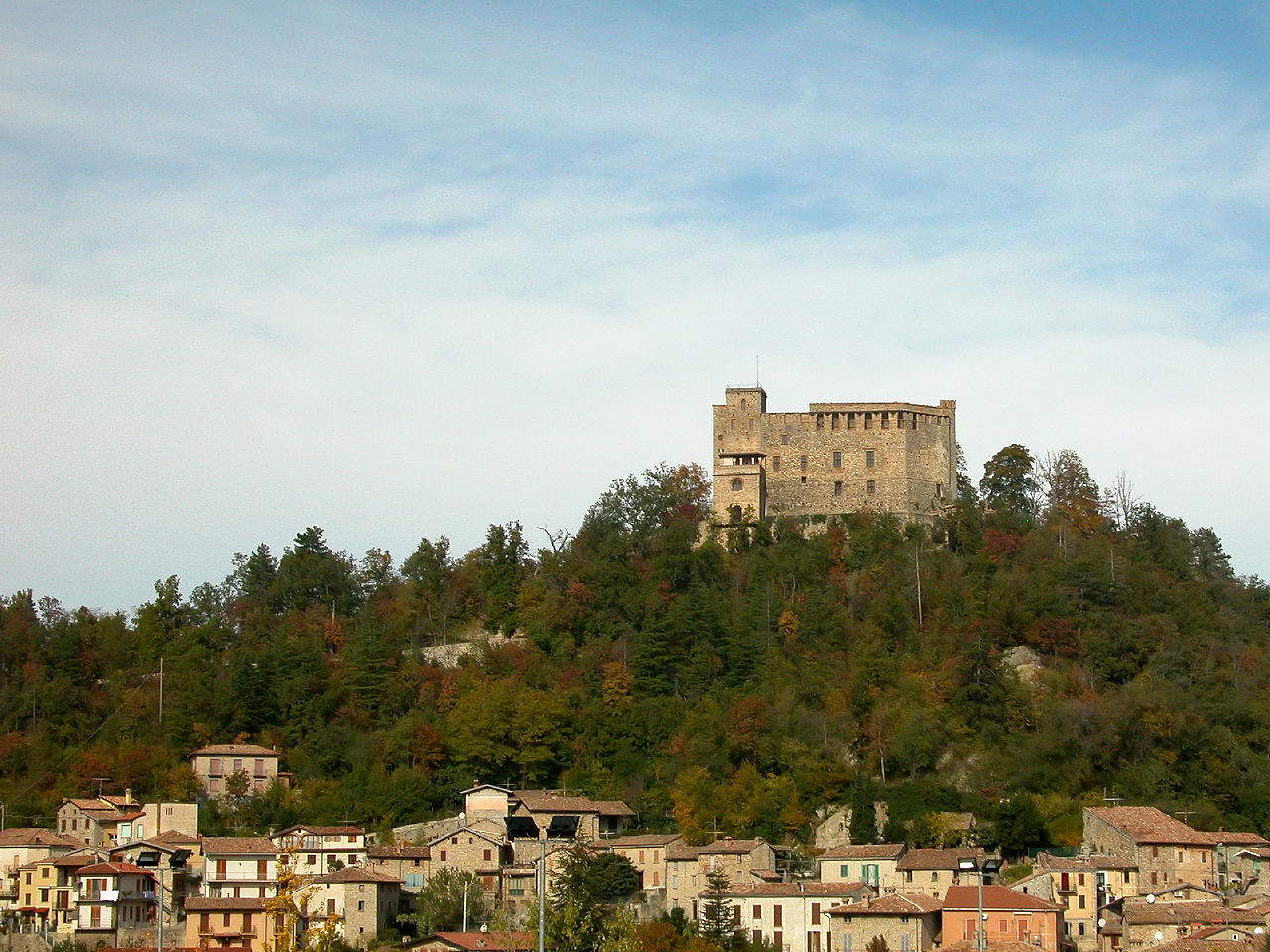 |
| The village of Zavattarello and its castle |
7. Monte Isola
This is the village located on the island of the same name on Lake Iseo, which has a record in Europe: it is the lake island with the highest altitude above sea level (six hundred meters). It can be reached by a ferry that departs from the shores of the lake: the village spreads along the coast of the island and is dominated by the imposing mass of the hill that towers above the town. Here, on the summit, is the Sanctuary of the Madonna della Ceriola, a house of worship built in the 1500s on the remains of an older, 11th-century chapel. Inside are 17th-century frescoes and a statue of the Madonna della ceriola, a medieval wooden sculpture particularly dear to local worship, is preserved. Monte Isola is divided into several hamlets (the largest is Peschiera Maraglio), which still preserve some ancient monuments: among them, in the locality of Siviano, is the Martinengo Tower, which reaches twenty meters in height and is medieval in age.
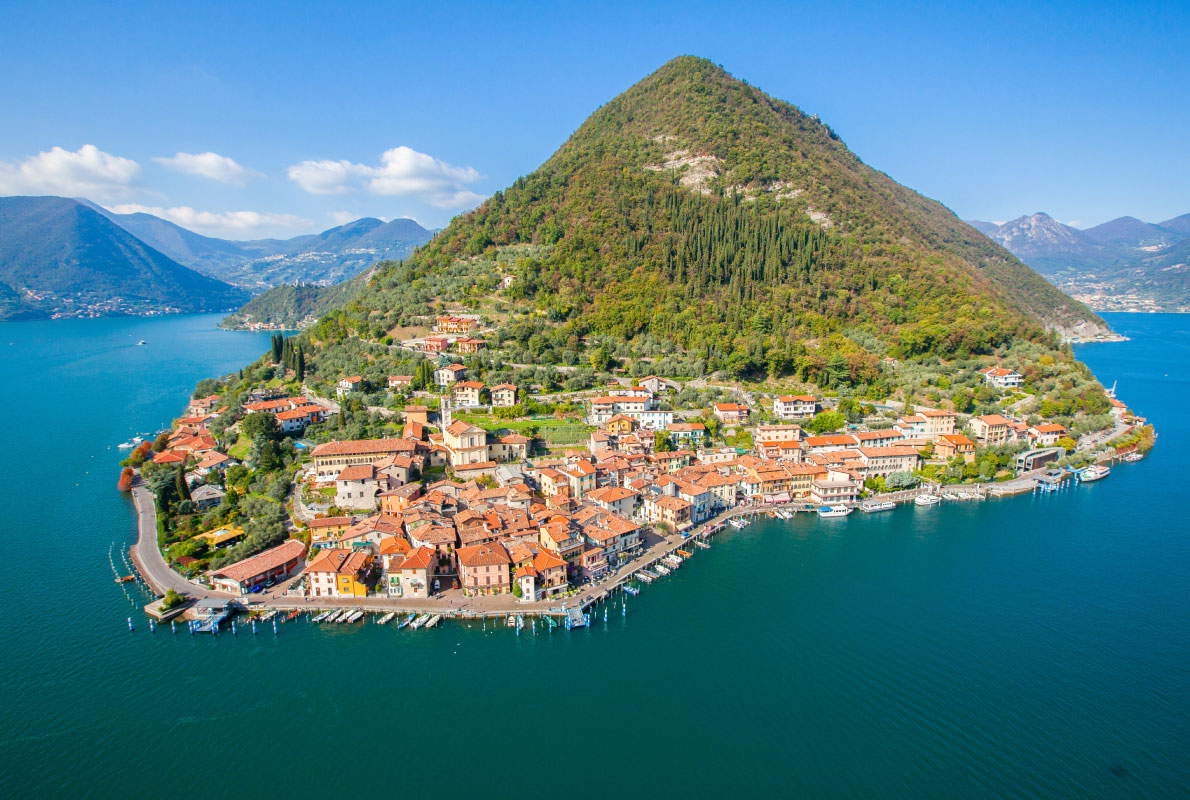 |
| View of Monte Isola |
8. Trescore Balneario
Located in the province of Bergamo, in the heart of Val Cavallina, of which it is the main center. A renowned spa center whose springs were already known in Roman times, it was an ancient fief of the Suardi family, a noble Bergamasque family that called here one of the greatest artists of the Renaissance, Lorenzo Lotto, to decorate the family chapel: the Venetian artist created precisely in the Suardi chapel, in 1524, one of the most important works of the 16th century, with the great wall of the Christ-Vine and with the stories of the lives of St. Barbara, St. Brigid, St. Catherine and St. Mary Magdalene.
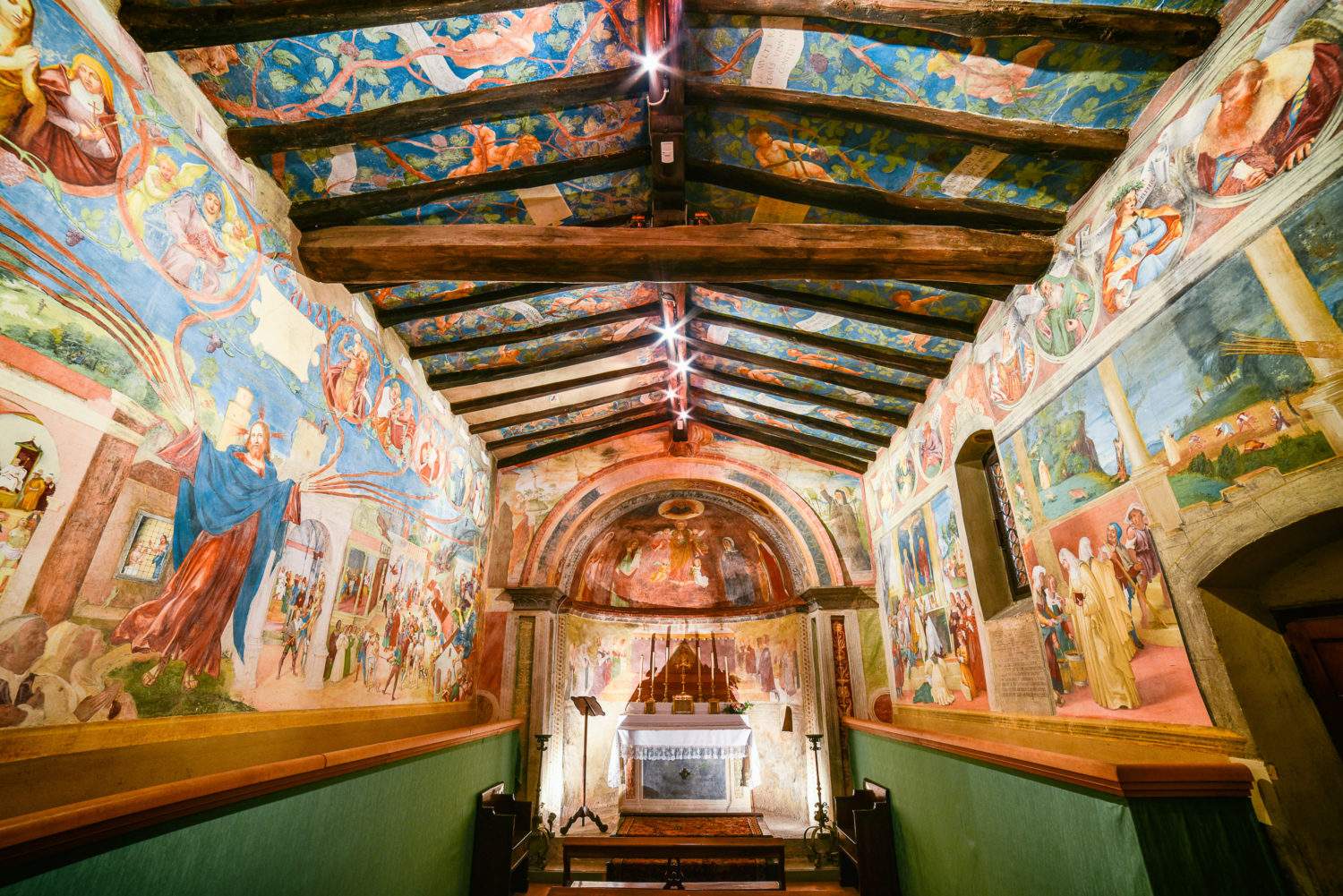 |
| Lorenzo Lotto’s Cristo-Vite in the Suardi chapel in Trescore Balneario. Ph. Credit In Val Cavallina |
9. Gardone Riviera
The village is located on the Brescian shore of Lake Garda, of which it is one of the main tourist destinations. The town is of ancient origin, but it was only at the turn of the 19th and 20th centuries that it became a holiday destination and was endowed with a Grand Hotel in 1884, a Casino (dating from 1909, an Art Nouveau building, now a restaurant), and sumptuous villas. Among the illustrious figures who chose to reside in Gardone Riviera, the best known is Gabriele D’Annunzio, who passed away here in 1938: he had moved there in 1921 and built the Vittoriale degli Italiani, the pharaonic complex where he spent the last years of his life. Today the Vittoriale is open to the public, who can visit all the rooms where the poet spent the extreme stages of his existence: the residence, the open-air theater, the Victory Temple, and the military ship Puglia. Gabriele D’Annunzio’s tomb is also located within the complex.
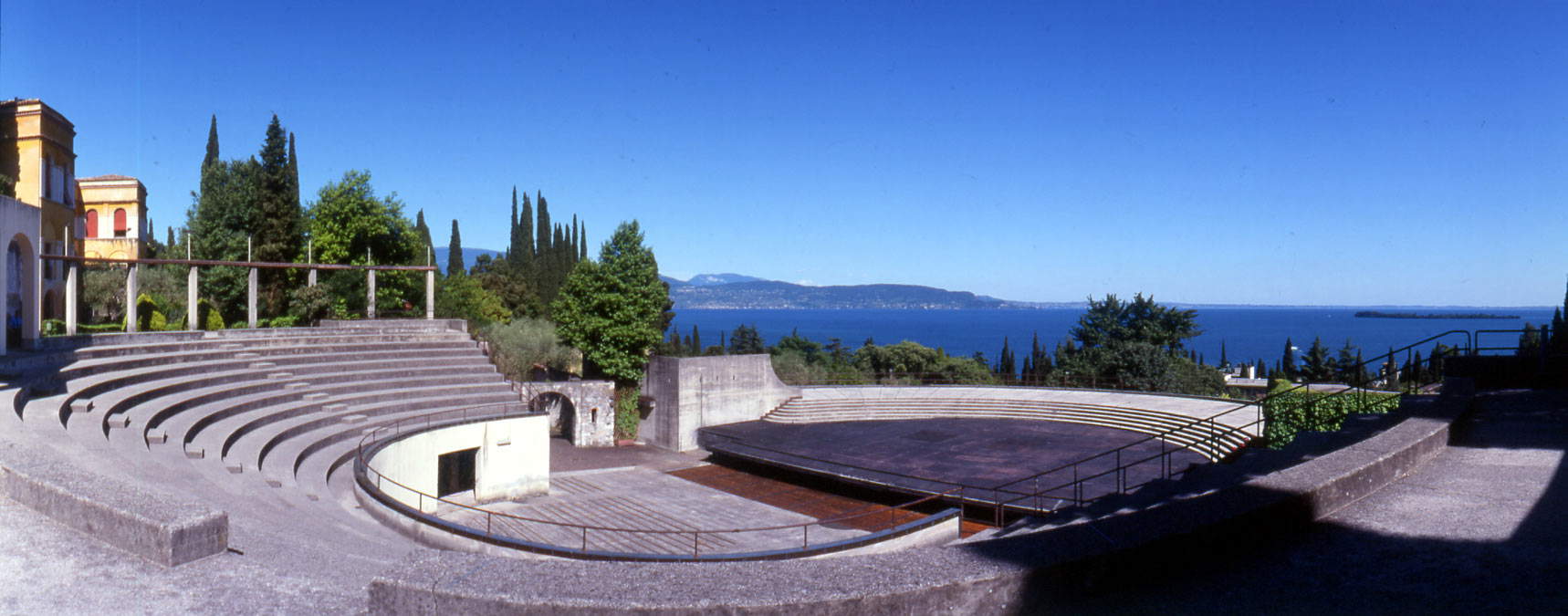 |
| Gardone Riviera, the open-air theater of the Vittoriale |
10. Angera
It is located on the Varese shore of Lake Maggiore, and settlements in the area have been known since prehistoric times, but the settlement began to take on the appearance of a village in Roman times. Angera is developed at the foot of a rocky outcrop on top of which is the Rocca Borromea, which dominates the entire southern end of the lake. The building is divided into five bodies of buildings dating from different periods, between the 11th and 17th centuries, and owes its name to the fact that it was the possession of the Borromeo family, who over the centuries had it decorated and enriched with works of art. Today you can visit the historic rooms with the ancient frescoes and you can walk through the halls of the Museum of Dolls and Toys, opened in the Rocca in 1988 at the behest of Princess Bona Borromeo Arese: it preserves dolls and playthings dating from various eras from the 18th century onward (it is one of the most important European museums dedicated to toys). Around the village, the Bruschera oasis and the islet Partegora allow for many nature excursions to admire the wonders of the flora and fauna that populate Lake Maggiore.
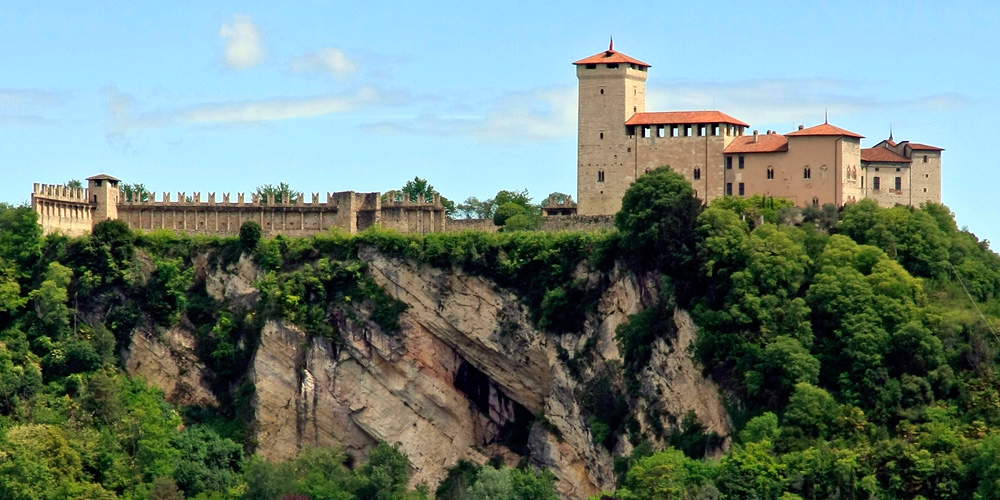 |
| The Borromean fortress of Angera. Ph. Credit Alessandro Vecchi |
 |
| Ten villages to visit in Lombardy |
Warning: the translation into English of the original Italian article was created using automatic tools. We undertake to review all articles, but we do not guarantee the total absence of inaccuracies in the translation due to the program. You can find the original by clicking on the ITA button. If you find any mistake,please contact us.